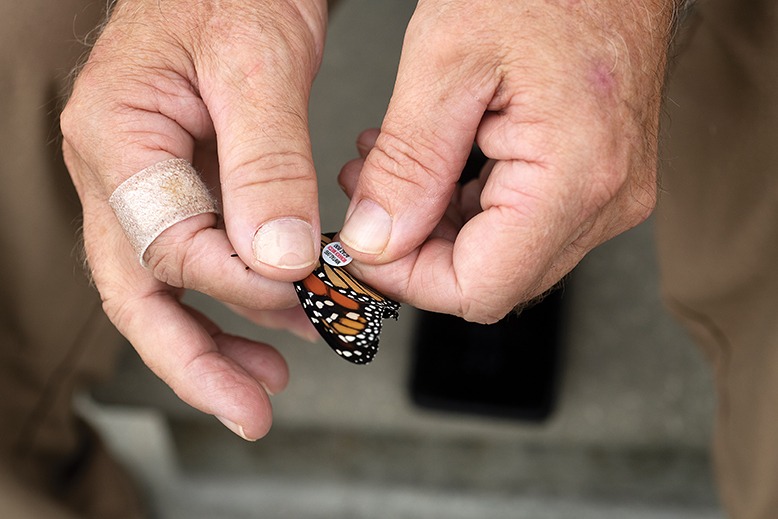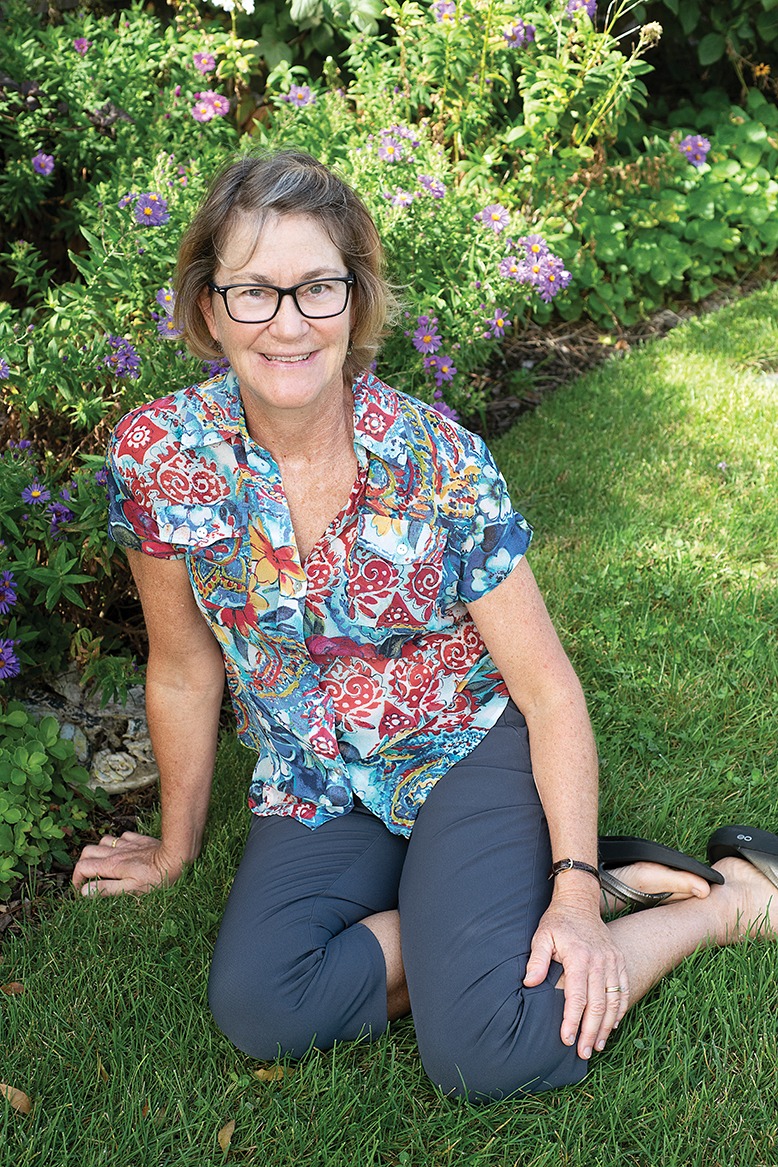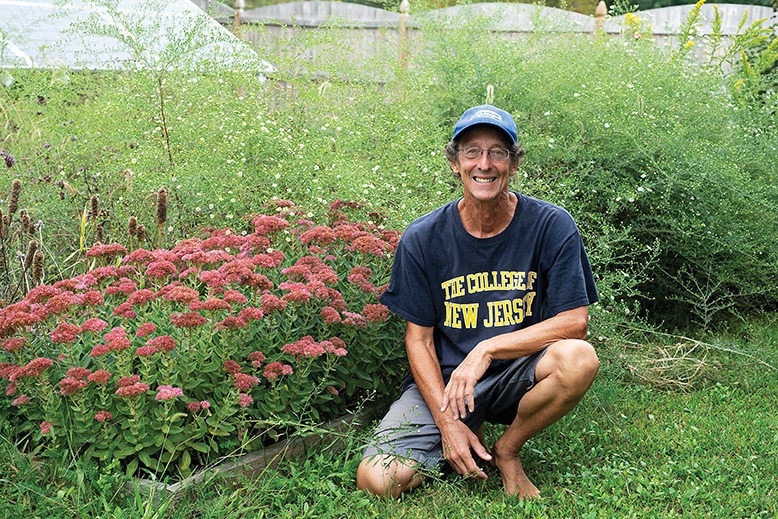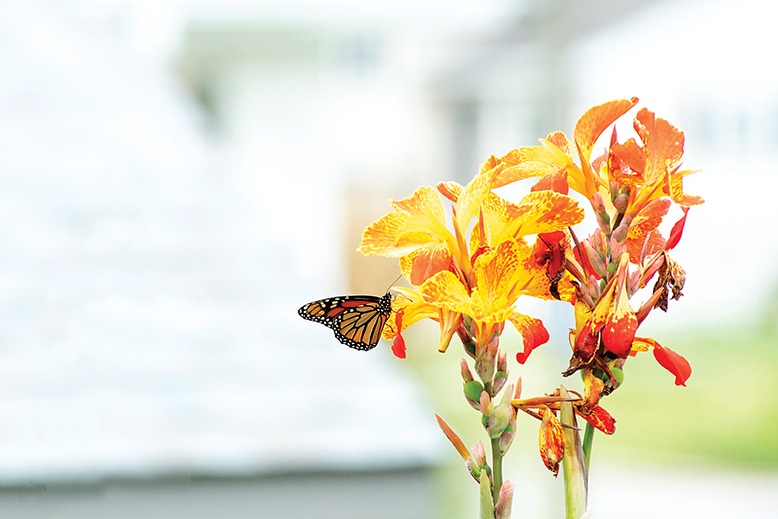It’s not every day you see an orange pine tree. Even 20 years later, retired teacher Jack Miller recalls the first one he saw: a 40-foot pine covered in monarch butterflies outside Ocean City High School. “I ran back in the building to get people to show them,” says Miller, who today fills his 1-acre property in Petersburg, Cape May County, with fall-blooming native plants to help fuel the distinctive black-and-orange insects on their more than 2,000-mile journey from as far north as Canada to wintering grounds in Mexico.

Jack Miller carefully tags a monarch to record its movements. Rebecca McAlpin
From September through November, monarchs migrate through New Jersey. Weighing less than a paper clip, these deceptively delicate insects can travel up to 100 miles a day, braving sudden storms and a food supply that is shrinking as a result of habitat loss. By the time they arrive in South Jersey, some are visibly thin, their wings tattered. Their next challenge: navigating the perilous journey across Delaware Bay.
“They’re looking at 13 miles of open water, so they’re like, Oh, no” says Teresa Knipper, who, on her quarter-acre in Cape May, provides monarch fuel via nectar-rich native plants. “My understanding is that they actually tank up and cross the bay using ships and the ferry as stopping points.”

Teresa Knipper of Cape May tends her garden filled with nectar-rich native plants. Photo by Rebecca McAlpin
But monarchs can’t always count on hitching a ride on a seafaring vessel. Instead, they rest and refuel on dry land while awaiting favorable weather conditions. “They start piling up by the thousands at Cape May Point waiting for a northerly wind, something that will help them across,” says Miller.
To reach the Cape May bayshore, however, monarchs must first navigate through the state. For that, they require water, trees or other protection at night for roosting, and an ample supply of nectar. Among their favorite sources of nutrition: New England aster, blue mistflower, mountain mint, blazing star, false sunflower and Joe-pye weed. Though milkweed is essential for monarchs’ survival, they need it earlier in the year for reproduction.
Throughout New Jersey, gardeners and birders have been taking monarchs under their wings, counting and tracking them, and laying out all-you-can-eat buffets of autumn-blooming plants free of neonicotinoids, a systemic insecticide lethal to insects via pollen and nectar. (Before purchasing nursery plants for your garden, Miller advises asking for neonics-free specimens.)

Jack Miller fills his Petersburg yard with fall-blooming plants to fuel monarchs for their trip across Delaware Bay. Rebecca McAlpin
Even golfers get into the act. As part of the nationwide Monarchs in the Rough program, 21 golf courses in the state have each dedicated an area of up to an acre to monarch-friendly plants. Participating courses include Montclair Golf Club in West Orange, Neshanic Valley Golf Course in Neshanic Station, and Stone Harbor Golf Club in Cape May Court House.
New Jersey Audubon’s Monarch Monitoring Project counts and tags monarchs moving through Cape May during September and October. Its Cape May Bird Observatory runs outdoor meadow walks to demonstrate how to catch the insects and affix small coded stickers to their wings. Citizen scientists are encouraged to keep an eye out for migrating monarchs, snap a photo of a tag, and transfer the data to a nationwide database run by Monarch Watch.
[RELATED: Helping Monarch Butterflies, One Hatch & Release at a Time]
Citizen scientists can also record their sightings on the South Jersey Butterfly Project blog. It covers Ocean, Burlington, Camden, Atlantic, Gloucester, Salem, Cumberland and Cape May counties. Northern-based butterfly enthusiasts can log onto the North Jersey Butterfly Club site, which reports sightings in 13 counties and is part of the Morristown-based North American Butterfly Association.
Finally, almost 900 New Jersey gardens are registered as Monarch Waystations by Monarch Watch. The gardens are found at schools, businesses, parks, zoos and nature centers, including Reeves-Reed Arboretum in Summit, Deane Porter School in Rumson, and the Presby Memorial Iris Gardens in Montclair. Among registered private-backyard gardens in the state are the whimsically named Royal Monarch Inn, the Monarch Café and the Monarch’s Fall Chateau and Spa.

Photo by Rebecca McAlpin
But it’s in Cape May where the monarch show really takes flight. “As soon as you feel that humidity drop and those northwest winds, you drop what you’re doing and get out there, because you’re going to see a phenomenon,” says Knipper. “I’ll see 50 to 75 monarchs in my yard.”
Gardeners like Knipper are only too happy to share their enthusiasm. “There are people who have rented the same condo behind my house for, like, 15 years,” she says. “I’m sort of the gatekeeper to the beach, so they have to talk to the butterfly lady. They’re like, ‘Hey, the garden looks great,’ and they tell me it’s inspired them to try it at home.”
Monica Cardoza is a Ridgewood-based freelancer who loves to write about the outdoors.
The post Why Migrating Monarch Butterflies Love NJ appeared first on New Jersey Monthly.

